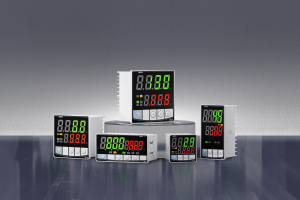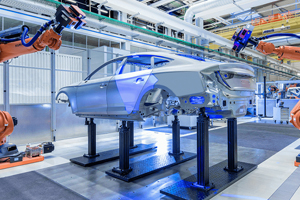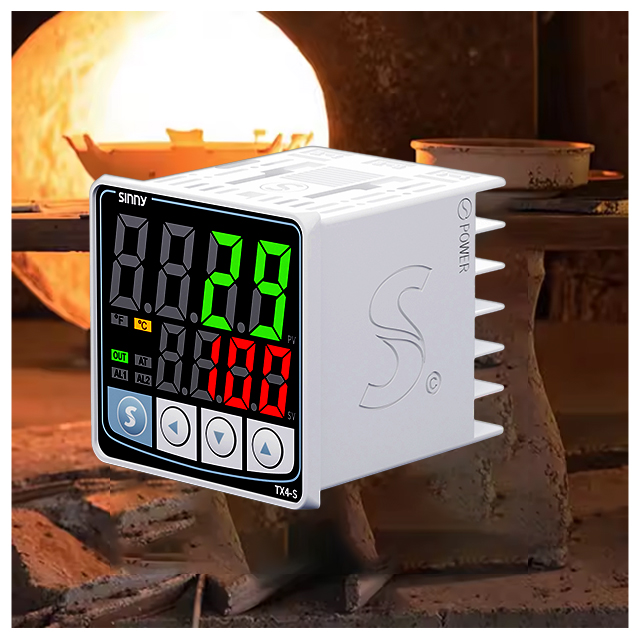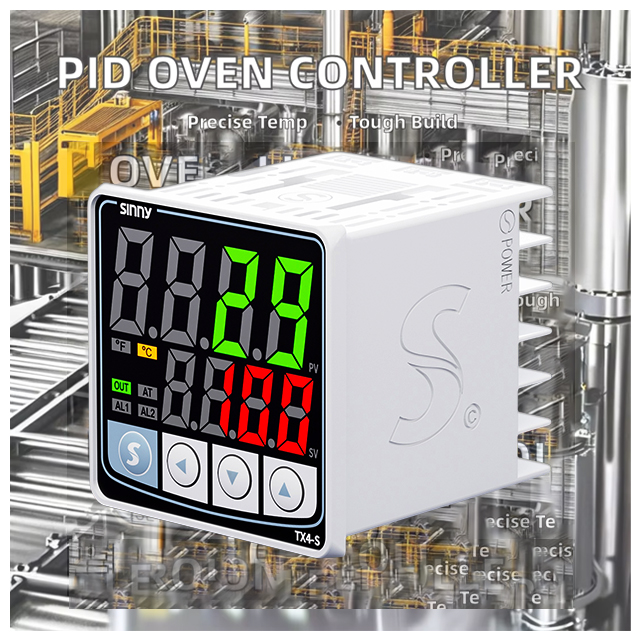A comprehensive guide to buying a PID temperature controller
Learn how to buy a PID Temperature Controller. Discover PID basics. Learn what to look out for in a PID controller, how to choose the right one, tips for installation, tuning advice, and selection criteria.
A Temperature Control , also known as a PID Controller , is a device that automatically adjusts an output signal in response to feedback. The acronym PID stands for Proportional-Integral-Derivative, referring to the three fundamental components of its control algorithm:
Proportional (P), : The component responds to the currenterror - that is, the difference between desired temperature (the Setpoint or SP) and actual temperature measured (the Process Variable or PV). The larger the error, the stronger will be the corrective action. However, pure proportional control can leave a residual error.
Integral: The component takes into account the error that has accumulated over time. The system continuously adds the previous errors in order to remove the residual error from the proportional action.
Derived (D): This component forecasts future errors using the change rate for the error. The system reacts based on how fast the temperature changes, and allows for anticipation of adjustments in order to avoid overshooting.
This calculated signal is used by the controller to control the amount of power delivered to the element for heating or cooling, usually via relays or Solid State Relays. The closed-loop system of feedback allows the controllers to correct deviations from the setpoint and maintain the temperature in a consistent manner. When you're considering purchasing a PID control, it is important to understand this principle.
How is the PID controller used?
PID Controllers are indispensable for a wide range of applications due to their versatility. Some of the most common applications are:
Industrial processes: Kilns and furnaces (ceramics, glass or metal), plastic welding stations, heat treatment ovens for ceramics and metals, dry ovens to cure chemicals, soldering station, etc.
Scientific Research & Laboratory : Incubators and growth chambers. Centrifuges. Analytical ovens. Scientific ovens requiring precision ramping.
Food & Beverage: Baking ovens, proofing cabinets, pasteurization equipment, canning machines, espresso machines, deep fryers.
Hydroponics and Aquariums: Pumps that require stable temperatures.
Projects for Hobbyists: Laser cutters and kilns with advanced technology, precision glue curing ovens, resin castings.
Temperature variations that negatively affect the quality or safety of a process or product can be controlled precisely.
Types of PID controllers: Form Factors & Features
You'll find a variety of PID controllers, each with different features, construction quality and intended uses.
Digital vs. Analog: Although "analog PID" controllers are available, the majority of modern devices offer programmability, user interfaces, and more. Digital controllers offer greater control and flexibility.
Lab vs. Benchtop: Laboratory controllers tend to be smaller and simpler. Industrial controllers tend to be more robust and feature more protective features (over-temperature or short circuit), a wider temperature range, as well as more complicated communication protocols.
The following input types are available: Controllers accept different temperature sensors:
Thermocouples: J-Type, K-Type (most common), T-Type, etc. K-Type thermocouples have a wide range of temperature and accuracy.
Resistance temperature detectors (RTDs). The Pt100/Pt1000 RTDs are commonly used platinum types that have a high degree of accuracy in industry.
Make sure the sensor input on your controller matches what you are using.
The output types are:
Output Relay: Turns heating and cooling elements on/off using full line voltage. This is a good choice for simple control of on/off but does not allow fine adjustments.
Solid State Relay Output (SSR). Enables smooth and continuous power control, (PWM - pulse width modulation) or phase angle firing with very fine temperature adjustment. Heating elements are often preferred. SSRs can be controlled by controllers that offer phase control.
Interface & Display: LCD or LED screens show temperature and setting. The user interfaces can range from dials to touchscreens that have complex menus.
Programming and Features: Look for controllers that offer PID tuning (manual or automatic), Ramp/Soak, Alarms/Limitations (gradual changes in temperature), Modbus communication, multiple setpoints, data logging, Modbus communication, alarms/limitations, Modbus communication, Modbus communication, Multiple Setpoints.
Power requirements: The majority of industrial controllers run on standard 240V AC power. Some laboratory models use lower voltages internally, or have dual voltage options.
What is the Best PID controller for You?
When selecting the right controller, you must match its features to your application. Take these steps to get started:
Determine Your Application: How do you want to achieve control?
Define your Accuracy requirements: Certain applications require extreme precision and may even call for calibration capabilities.
Determine output needs: Which device is to be controlled by HTML0? Is it a simple switch (Relay) or a fine modulation? How much electrical power is required (voltage/current, rating of the load)? Check that the output of the controller can support the load.
Additional Features to Consider: Are you in need of Auto-Tune? (useful for those who lack the control engineering expertise). Alarms to warn of safety limitations? Modbus integration for other systems? Multi-Setpoints to accommodate complex profiles How to control heating/cooling with a Ramp/Soak?
Establish a Budget: Decide how much money you're willing to spend. Costs are generally higher when there is more functionality and a robust design.
What to consider when buying?
User Interface: Is it intuitive? Does the PID tuning procedure seem straightforward? You should look for user reviews and clear documentation.
Safety & Power consumption: Make sure electrical specs match your set-up. Safety features such as high temperature alarms should be considered.
Install & Mount: Verify physical dimensions and mounting possibilities. Make sure there is enough space for the wiring, and that it can be accessed.
Warranties: Check the warranty offered by the manufacture.
How to buy and what to look for
Industrial Specialized Suppliers: Companies such as Grainger MISUMI and RS Components stock a variety of control equipment.
Buy Directly from the Manufacturer: Offers better prices and more direct customer support. This is especially true for industrial models.
Distributors of technical products: Provide a wide selection with support.
Look for the following when evaluating product listings:
Datasheets in Detail: Essential for programming, technical details, and wiring diagrams.
Product descriptions that are clear: Must accurately describe features, inputs/outputs and power requirements.
User reviews: Give real-world insight into performance and reliability.
Information on Warranty: Specifics about the coverage and warranty period.
Installing and Setting Up the System
Installing your controller properly is important after purchasing .
First, safety: Turn off all power to equipment that you are going to control and let capacitors discharge.
Wiring: Follow the diagram carefully provided by the controller or the output device connected (SSR, Relay). Be sure to pay attention to the polarity of sensors, and proper wiring for SSRs.
Initial Configuration Turn on the controller. Let it initialize. It may be necessary to go into a programming mode in order to choose the scale for the temperature, calibrate (if needed) the sensor, set the Setpoint and to configure the basic parameters such as upper/lower limits of the alarm.
Why you should tune your PID controller
Tuning PID Parameters (P, I and D Values) is often required to achieve optimal performance. The controller's response to error is adjusted by this process.
What exactly is tuning? Finding out the best balance between P, I and D coefficients to suit your system and load.
What's important: Bad tuning can lead to instabilities (oscillations), a slow response or failure to achieve the setpoint. A good tuning will ensure precise and stable control.
Methods Manual Tuning can be complicated and require process knowledge. Many controllers today offer auto-tune features that automate the process of determining appropriate parameters.
Resources Search for controllers that have Auto-Tune or online forums and resources dedicated to PID Control for manual tuning guide (e.g. Control.com Forum).
Troubleshooting common issues (post-purchase)
Issues can occur even with the best setup. Troubleshooting basics includes:
If the temperature does not hold: check sensor connections, PID tuning and power output.
Controller not powering on: Check the fuse, verify that you have enough voltage and make sure your wiring is correct.
If your alarms are not working, check the sensor values, alarm limit settings, and output wiring.
Erratic behavior: Check for loose wires, electrical noise, wrong settings or a defective controller.
Investment in Precision Control
The purpose of this guide is to provide you with all the information you need for an effective purchase and implementation. This will ensure that you maximize the value you receive from your controller. To maximize performance, use resources such as manufacturer datasheets or tuning guides.
- Understand PID controllers: the Basics
- A comprehensive guide to selecting a PID temperature controller























